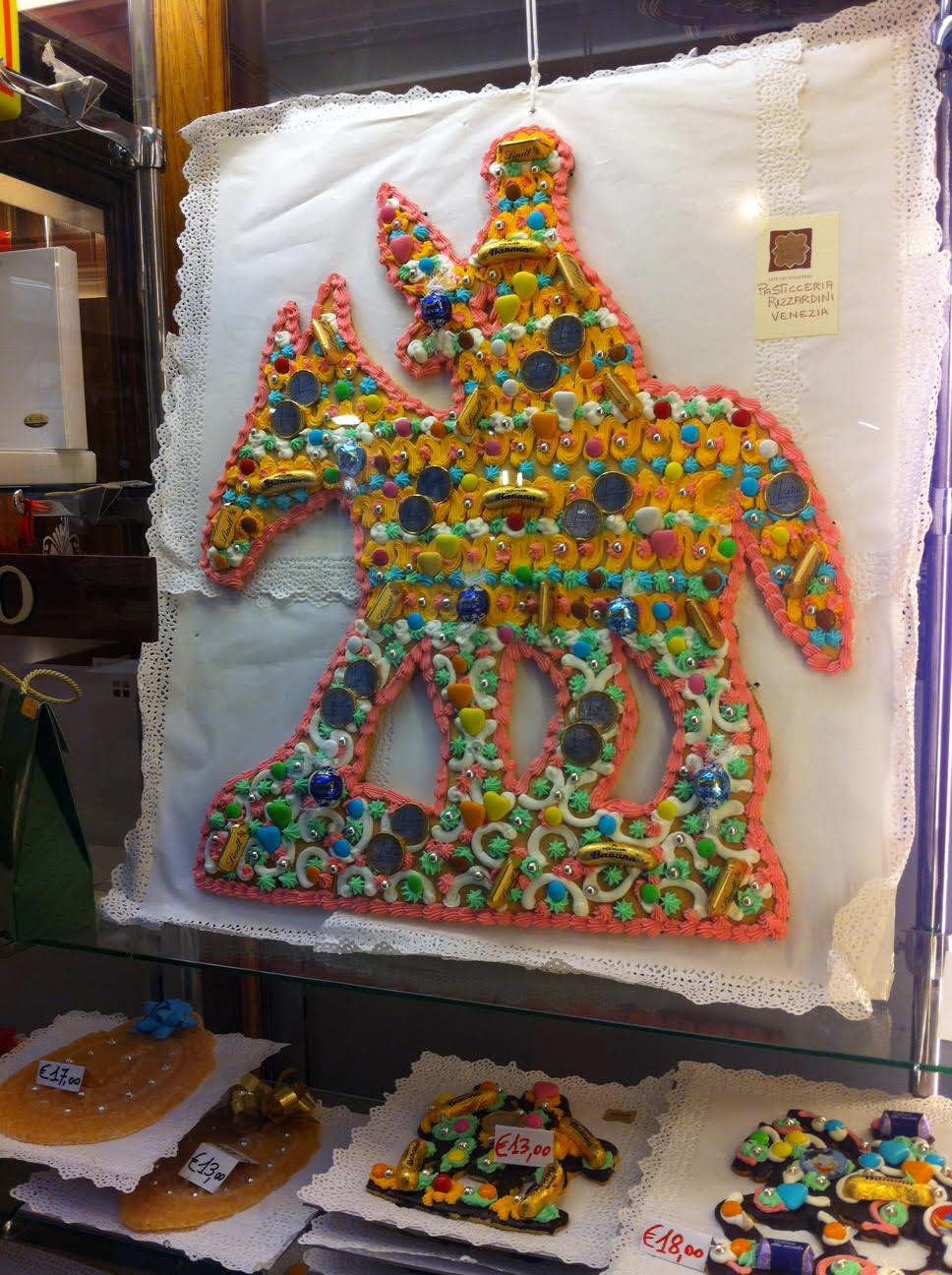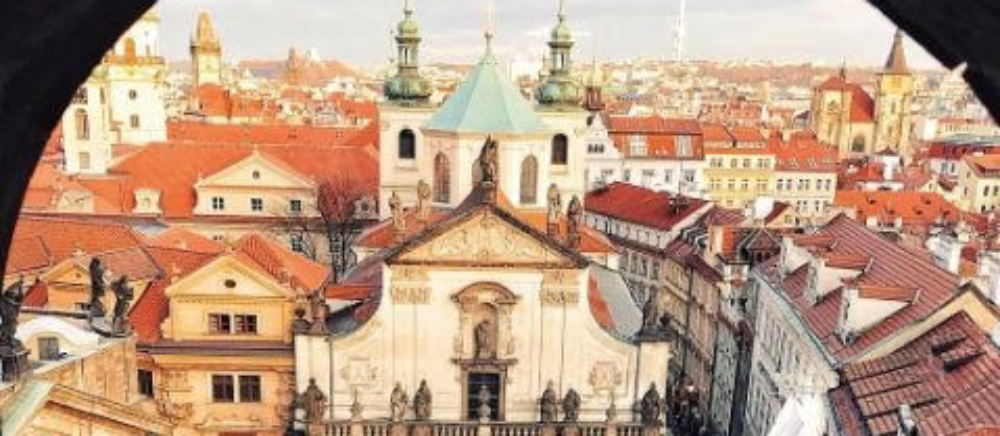
A cookie for St. Martin’s Day on display in a bakery window in Venice, Italy shows St. Martin on his horse ready to cut his cloak in half.
St. Martin of Tours was a Roman soldier in 4th century Gaul. He met a beggar one cold, snowy day who begged him for a rag or two to keep himself warm. St. Martin toook his sword and cut his cloak in half, giving a portion to the beggar. That night, he had a dream in which he saw Christ enthroned in glory, wearing the half of the cloak Martin had given to the beggar. “Where did you get such a cloak?” he heard the angels ask Christ. “My friend Martin gave it to me,” Christ replied.
When he awoke, Martin abondoned his duties as a soldier and became a monk. He attracted many disciples and became a famous monk. He insisted that his disciples always care for any poor person who came to the monastery gate because the monks would be serving Christ when they served the poor. He was made the bishop of Tours. Many hospices and hostels for the poor were dedicated in his honor. The ruins of one such hospice in Oxford–at the bottom of Carfax Tower–still has his image above what’s left of the front gate.
St. Martin’s feast day is November 11 and in many European countries that is the beginning of the “holiday season.” There was a 40-day fast before Christmas and St. Martin;s Day was the last important feast day before Christmas; families would often have a fancy goose dinner on St. Martin’s Day to mark the last occasion to have a big meat dinner before Christmas. (According to legend, Martin was reluctant to become bishop, which is why he hid in a stable filled with geese. The noise made by the geese betrayed his location to the people who were looking for him.) The goose dinner on St. Martin’s Day was a “rehearsal” for the goose dinner on Christmas Day, much as the turkey dinner on Thanksgiving in the United States is now often a “rehearsal” for the family dinner on Christmas Day.
In many European towns or villages a man dressed as St. Martin rides on a horse in front of a procession to celebrate St. Martin’s Day. The children sing songs about St. Martin and greet him as Americans greet Santa Claus at the end of the Thanksgiving Day parade in New York.

It’s also why St. Martin’s Day was chosen to end WW1…he was a soldier who became a man of peace. His feast is also the origin of Thanksgiving.
David:
Yes, the goose on St. Martin’s Day to mark the beginning of the pre-Christmas season is in many ways a precursor to the modern American celebration of Thanksgiving to mark the beginning of the winter holidays.